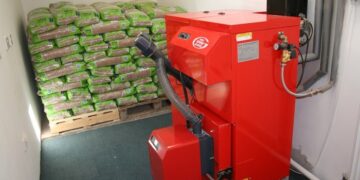The disadvantages of most strip weight meters with lever-membrane measuring systems include their .large dimensions that require significant areas for placing, and unreliable work in dusty conditions.
Ribbon scales and dispensers using lever-adult systems in real production conditions work unreliable, with increased errors. Therefore, at present, new types of tape weights with tensometric and magnetoanizotropic sensors are being introduced into industry. If you want to build a country house or a cottage, then you should seek this in a construction company here: Construction of wooden houses.
The representative of this group of tape scales is the electroenzo-metric, conveyor scales of ETV-1, which work with tensometric weight sensors. The principle of operation of the electroenzometer is based on the use of the dependence of the electrical resistance of the wire converter on its mechanical deformation.
The wire converter is a thin wire made of special material glued to the deformable part. Under the influence of measured deformations, the geometric dimensions of the wire and its physical properties change, which changes the electrical resistance of the wire. To measure efforts, the wire converter is usually glued to the elastic body that converts the change in the force into a change in deformation.
Under the conveyor, instead of one ordinary roller -absorbing, a measuring roller is installed, based at the ends of two tensometric weight sensors. The tensometric weight sensors are designed to proportional transformation of the load into sensors into an electric signal. Structurally, they are a ring sensitive element located between the membranes – the lid and the base of the sensor.
On a ring sensitive element, tensodists included in the bridge scheme are glued. Power is supplied to one diagonal and a signal proportional to the load is removed from the other diagonal. The design of the sensor provides minimal sensitivity to transverse efforts.
Ribbon weight meters














